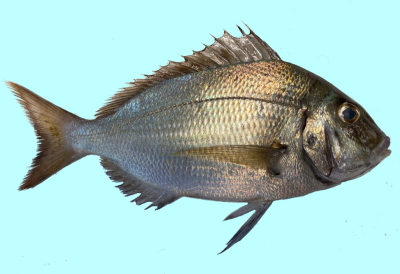|
|
The Scup Porgy identification, habitats, characteristics, Fishing methods
Scup or porgy, Stenotomus chrysops, is a demersal, schooling species undertake extensive migrations between coastal waters in summer and offshore deeper waters in winter when temperatures cool, migrating north and inshore to spawn in spring. Large scup generally occur farther offshore than do smaller, younger ones. Larger scup are found during the summer near the mouth of larger bays and in the ocean within 20-fathoms, and often inhabit rough bottom areas. Smaller scup are more likely to be found in shallow, smooth bottom areas of bays during summer.

|
The scup, Stenotomus chrysops, or porgy, known for its fine flavor and its avaricious pursuit of baited hooks, occurs along the continental shelf of eastern North America. It is most common from Cape Cod to Cape Hatteras, North Carolina, and is encountered only occasionally north of Cape Ann. It is an oval schooling fish that grows to 18 ½” in length but few adults exceed 2 pounds in weight or 14 inches in length.
|
Description
The scup's laterally flattened body is about two times as long as it is wide. The head is short in length and has a steep in profile is slightly concave dorsally with the eyes set high on the head and a small mouth. The Scup has one long, continuous dorsal fin, which possesses a series of 1 short and 11 long spines anteriorly. The anal fin also contains 1 short spine followed by several long ones. The tail is deeply concave and sharply pointed on the corners. The pelvic fins are located directly below the pectoral fins. The Scup's body is generally an iridescent dull silvery color flecked with light blue and displaying 12 to 15 inconspicuous horizontal stripes. The head is marked with dark patches, and the belly is white. The Scup's laterally flattened body is about two times as long as it is wide.
The scup's body is a dull silvery color flecked with light blue and displaying 12 to 15 inconspicuous horizontal stripes. The head is marked with dark patches, and the belly is white.
Habitats
Adult scup form into schools of similar-sized individuals in areas with smooth or rocky bottoms. They are particularly plentiful around piers, rocks, offshore ledges, jetties, and mussel beds; commonly found at depths of 6 to 120 feet. Young larvae live in very shallow estuarine waters. Juvenile and adult scup move into harbors and along sandy beaches during high tides, and then into deeper channels as the tides recede. Large scup generally occur farther offshore than do smaller, younger ones.
Scup prefer temperatures greater than 45 F and are most frequently encountered in water temperatures from 55 to 77 F. The abundance of scup in a specific area is frequently influenced by water temperature.
Spawning
Scup spawn from May to August, with the peak level of activity typically in June. Sexual maturity is essentially complete by age 3 at a total length of 21 cm. The Buoyant eggs hatch about 40 hours after fertilization. Within several days after hatching, the larvae, having used all yolk reserves, begin to feed upon copepods and other microscopic animals. Adult scup feed upon bottom invertebrates including small crabs, annelid worms, clams, mussels, jellyfish, and sand dollars. Each year as many as 80% of all juvenile scup fall prey to larger predators such as cod, bluefish, and weakfish.
Fishing Methods.
Scup feed frantically and fight energetically when hooked, thereby providing angling enjoyment for the entire family. This little scrambler is especially fun for children, as a school of actively feeding scup typically provides non-stop fishing action.Scup provide particularly exciting battles when anglers use either a medium-weight spinning or lightweight surf outfit carrying a 10 to 20-pound test line. Some anglers prefer jigging small lures, but the overwhelming majority prefer bait fishing. Scup trawling occurs primarily in sand and mud habitats on the seafloor, which are more resilient than deep-water, rocky bottoms.
Squid strips are favored because they last well through the frantic attacks a school of scup will make upon baited hooks.Although scup are quick to grab bait, they are difficult to hook. For greatest success anglers need to become adept at setting the hook as soon as the tip of the fishing rod shows the slightest dipping, or at lifting the baited hooks gently off the bottom to induce fish to strike sharply rather than allowing them to nibble at the bait.
Favored recipes include frying or poaching and serving with melted butter or margarine and a slice of lemon or lime. Large scup are delicious when lightly coated with butter, margarine, or mayonnaise and grilled over a charcoal or gas fire. Leaving the scaled skin on the fillets will help hold the flesh together while grilling.
|
|
|

